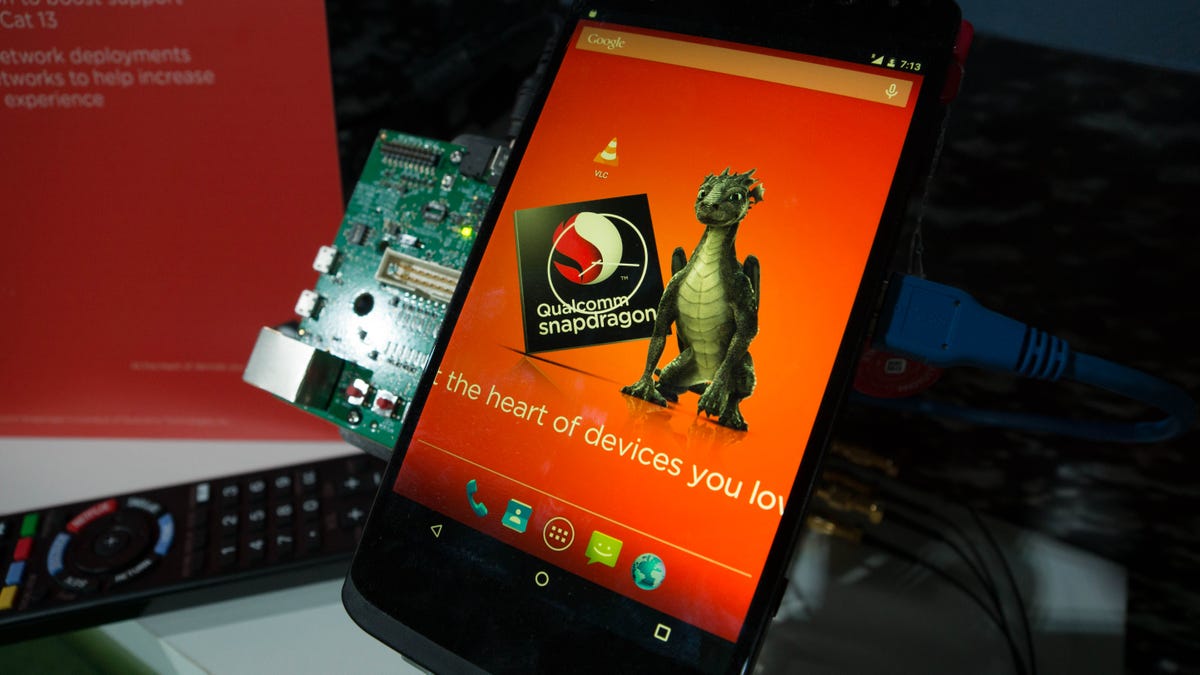The chip that will power some of 2016’s biggest smartphones just got a sneak preview in New York City.
Eight months after its initial announcement earlier this year during Mobile World Congress 2015 in March, Qualcomm’s demoed its latest Snapdragon 820 chipset during a New York press event today. Though the San Diego, Calif.-based company did not specify the exact devices, consumers can expect the chip to roll out alongside upcoming top-tier flagship phones next year — most likely around the Consumer Electronics Show in January 2016.
With this new iteration, there is pressure for Qualcomm to succeed. In July, the company announced it will reduce its workforce by 15 percent as part of a realignment plan. And last year, Samsung, a major Qualcomm partner, opted to equip its flagship Galaxy S6 with its proprietary Exynos 7420 processor instead of a Snapdragon due to apparent overheating issues. (Though, the 810 did end up in a number of popular phones as well, including the HTC One M9, OnePlus 2 , Google Nexus 6P and Motorola Droid Turbo 2 ).
To demonstrate the 820’s capabilities, Qualcomm placed several reference devices that were outfitted with the chipset, mostly smartphones and tablets, in different testing environments.
For mobile gaming, the 820 rendered 720-pixel resolution graphics and images on a loop. Qualcomm claims that the chipset’s Adreno 530 graphics processing unit will be 40 percent more power efficient than its 810 predecessor and have a 40 percent increase in performance. It also uses temporal, or time-based, antialiasing technology to smooth out the edges of graphics, further reducing pixelation.

 Enlarge Image
Enlarge ImageA reference device running the Snapdragon 820 chip.
Lynn La/CNET
The 820 will also consume 60 percent less power than 801 chipset (an even older iteration in Qualcomm’s mobile line). And while many current marquee handsets feature Quick Charge 2.0 technology, the 820 chipset introduces Qualcomm’s Quick Charge 3.0 technology.
With version 3.0, phones are supposed to charge four times faster when compared to standard charging methods (or go from a 0 to 80 percent battery level in 35 minutes). The 820 supports wireless charging (on phones that offer it), as well as compatibility for devices sporting Micro-USB, USB Type-A and USB Type-C charging ports.
The 820 supports Cat-12 LTE technology and the 802.11 a/d Wi-Fi specification. All around, that should translate to faster connectivity speeds. Qualcomm claims the chip has a peak downlink rate of 600Mbps and an uplink rate of 150Mbps on LTE. This is faster than the 810, which had a 450Mbps downlink peak and a 50Mbps uplink peak.
Since its March announcement, Qualcomm has been gradually touting other features and additional capabilities of the 820. During MWC 2015, it demoed the chip’s ultrasonic technology to scan a more accurate fingerprint, and the chip’s Zeroth platform, which uses machine learning to arm cameras and photo apps with facial and object recognition. In August, the company showed off the 820’s built-in security layer, which protects users against malware.
As for the overheating claims that plagued the 810, Tim McDonough, Qualcomm’s vice president of marketing, assures that the 820 was designed to run cooler than its previous iteration and to be better in general.
Its lower power consumptions, “means lower thermals,” said McDonough. “We attacked efficiency at every concernable level.”



